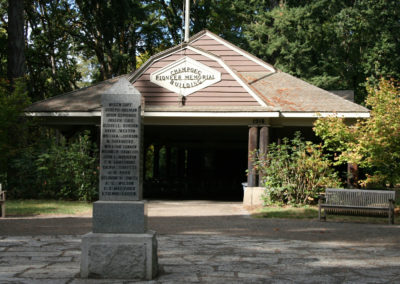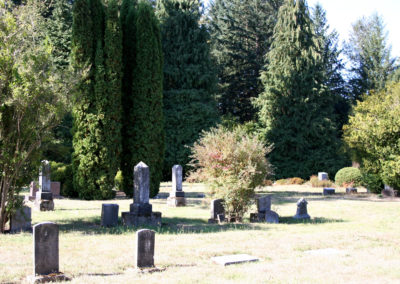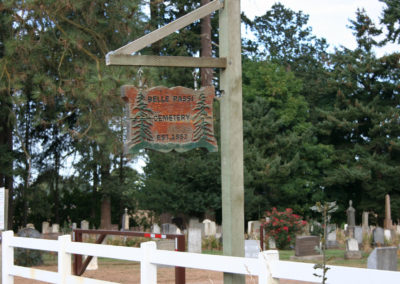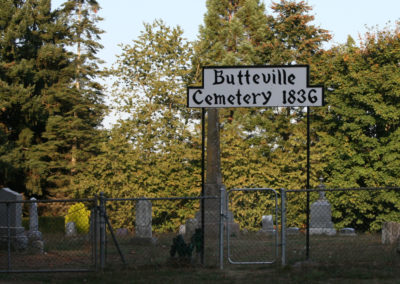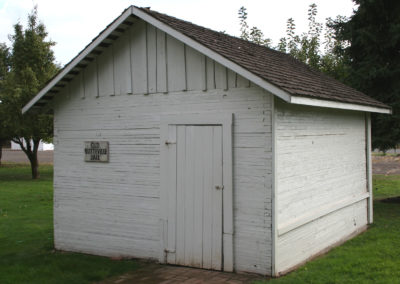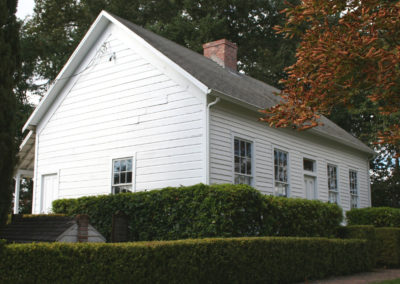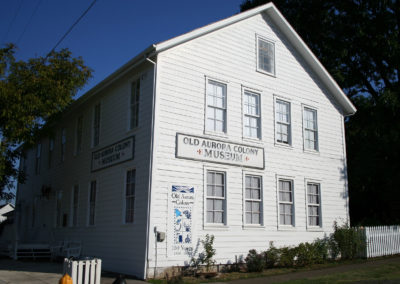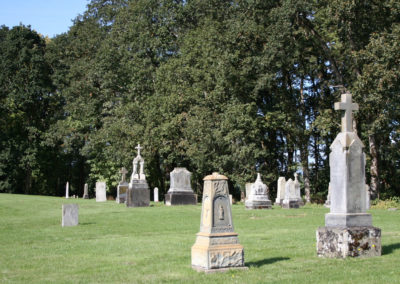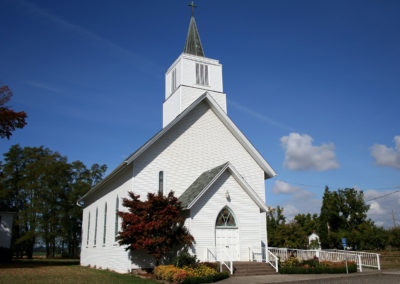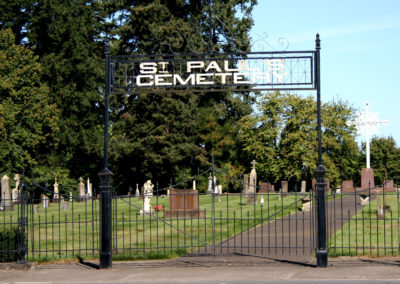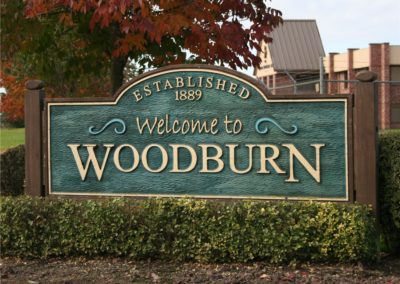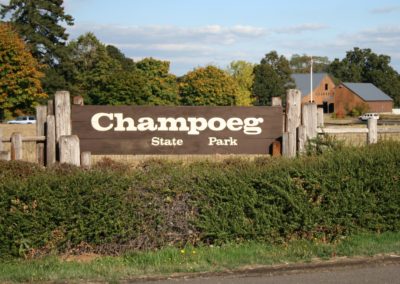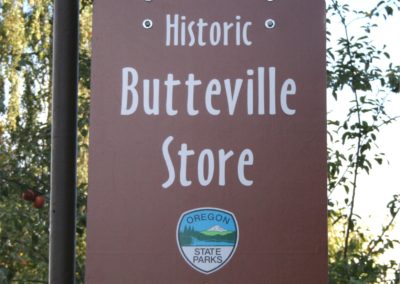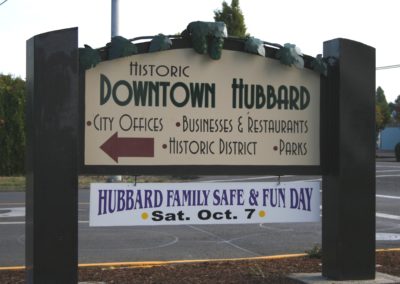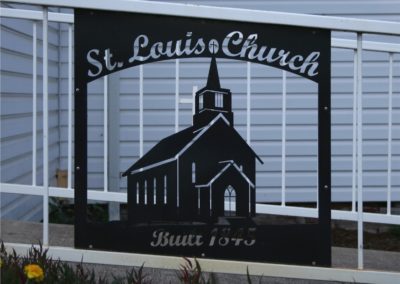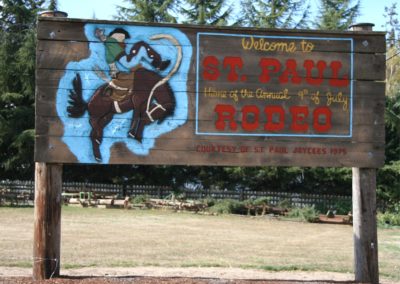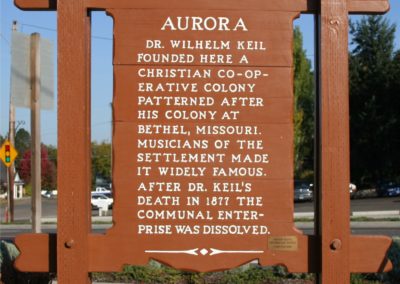Champoeg State Heritage Area
Area HistoryChampoeg State Heritage Area
 Native Americans have long made this area their home, hunting and fishing in the plentiful valley. The Hudson’s Bay Company sent French-Canadian fur trappers to the area as early as 1811. Permanent homes were established by the 1830s. The rise of agriculture in the Willamette Valley led to a slow but steady population increase, and by the 1840s, the locals were talking of self government in the area now called “French Prairie.” On May 2, 1843, the valley settlers met at Champoeg’s Hudson’s Bay Co. granary and trade store and voted (52 to 50) to establish a Provisional Government, the first ever in the Pacific Northwest.
Native Americans have long made this area their home, hunting and fishing in the plentiful valley. The Hudson’s Bay Company sent French-Canadian fur trappers to the area as early as 1811. Permanent homes were established by the 1830s. The rise of agriculture in the Willamette Valley led to a slow but steady population increase, and by the 1840s, the locals were talking of self government in the area now called “French Prairie.” On May 2, 1843, the valley settlers met at Champoeg’s Hudson’s Bay Co. granary and trade store and voted (52 to 50) to establish a Provisional Government, the first ever in the Pacific Northwest.
Champoeg’s key location on the river made it a regular stop for stagecoaches and steamboats in the mid-1800s. By the late 1850s, the town boasted 50 buildings and a population of 200. Nature intervened in 1861, when the largest flood ever recorded on the Willamette River destroyed the bustling town. The town was covered in 23 feet of water. Although some of the town was rebuilt, its fate was permanently sealed when floods arrived again in 1890.
Champoeg State Heritage Area includes Champoeg State Park with a unique combination of history, nature, and recreation. This includes the Memorial Site where Oregon’s first provisional government was formed in 1843, a park visitor center, Newell House Museum, the Butteville Academy and Old Butteville Jail, as well as the Pioneer Mothers Log Cabin and the Donald Manson 1860-style garden and barn. The park also includes the Historic Butteville Store founded in 1863.
Download a PDF of Dr. David Brauner’s archaeology work at Champoeg.
Historic Sites in French Prairie
A Photo Gallery

